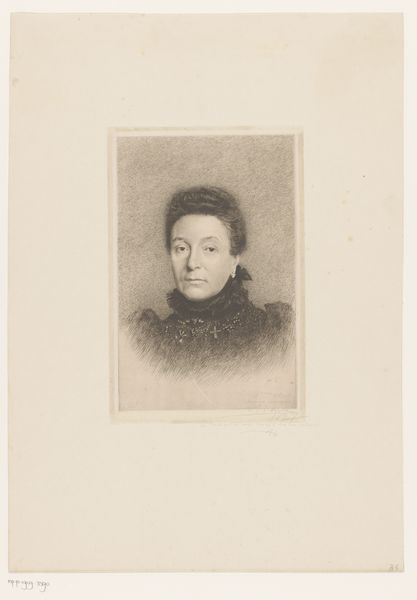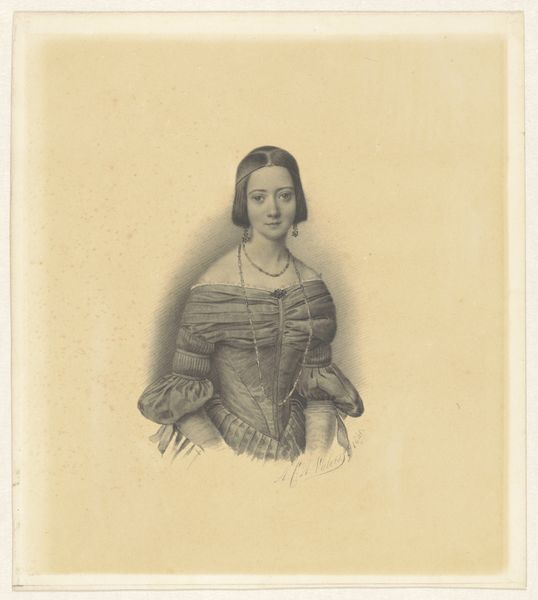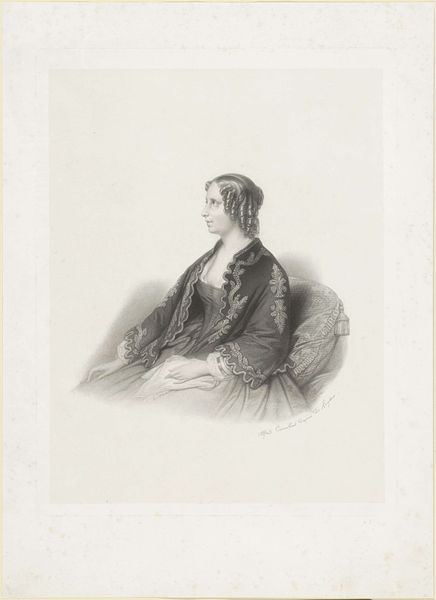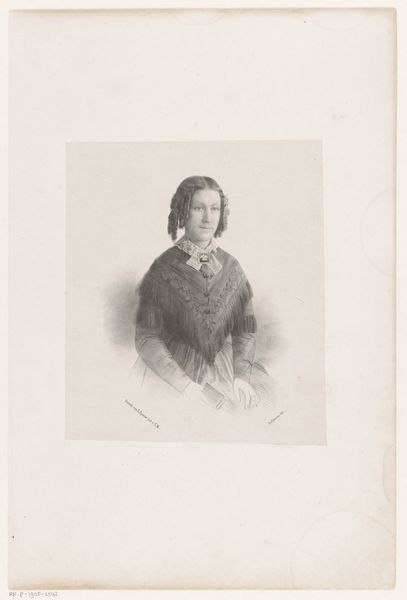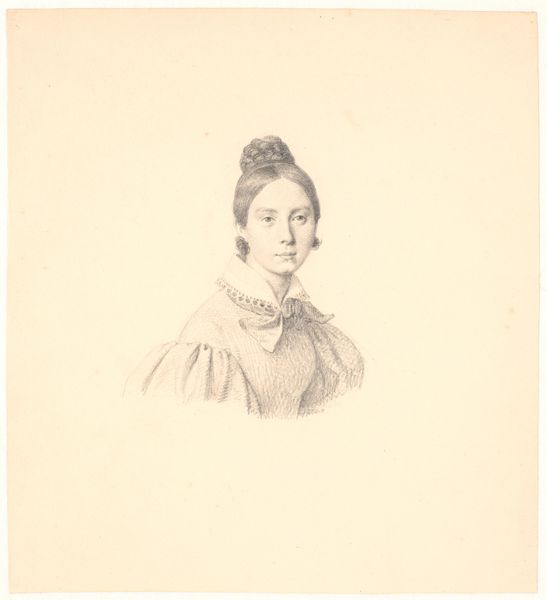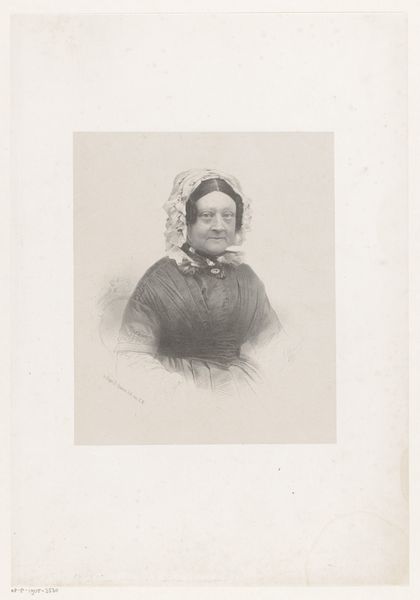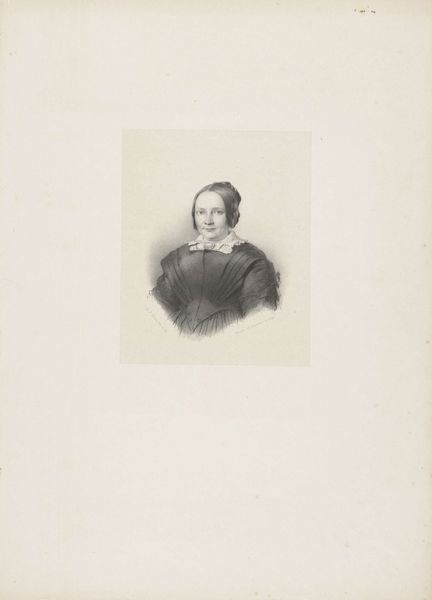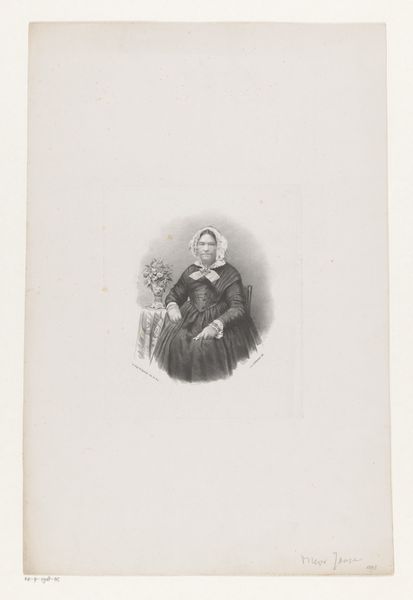
Portret van een onbekende vrouw, mogelijk mevrouw Claes 1831 - 1890
0:00
0:00
drawing, print, etching, graphite
#
portrait
#
drawing
# print
#
etching
#
graphite
#
realism
Dimensions: height 298 mm, width 197 mm
Copyright: Rijks Museum: Open Domain
Editor: This is a drawing and etching titled "Portrait of an Unknown Woman, Possibly Mrs. Claes," created between 1831 and 1890 by Jean Baptiste Pierre Michiels. The use of graphite gives it such a soft, almost photographic quality, despite being a hand-drawn print. What stands out is how reserved the subject seems; what are your thoughts on this portrait? Curator: The subject's reserved nature speaks volumes. In the 19th century, portraiture was a tool of social construction, particularly for women. The subdued expression, the careful arrangement of her hair, even the modest jewelry – they all contribute to an image of bourgeois respectability. Consider the constraints placed upon women in that era and how this image performs a certain expectation. How does it intersect with the male gaze, do you think? Editor: I hadn’t really thought of it that way, but the portrait does seem to portray a kind of “ideal” woman in that era. It's interesting to see how her individuality seems almost…suppressed by social expectations. Curator: Exactly! Look at how the artist has chosen to frame her in profile. It minimizes any direct confrontation with the viewer, further reinforcing a sense of demureness. The realism style also adds to the sense of the subject conforming to type, rather than emerging as an individual. Considering feminist art historical interpretations, how can we critique the artist’s intentions in this case? Editor: Perhaps Michiels unintentionally, or even intentionally, participated in reinforcing those societal expectations? This has definitely changed my perspective; I'll need to research 19th-century gender roles to better understand this! Curator: Absolutely! That research is key. And remember, by examining portraits like this one, we can challenge conventional historical narratives and engage in critical conversations about identity, power, and representation.
Comments
No comments
Be the first to comment and join the conversation on the ultimate creative platform.
